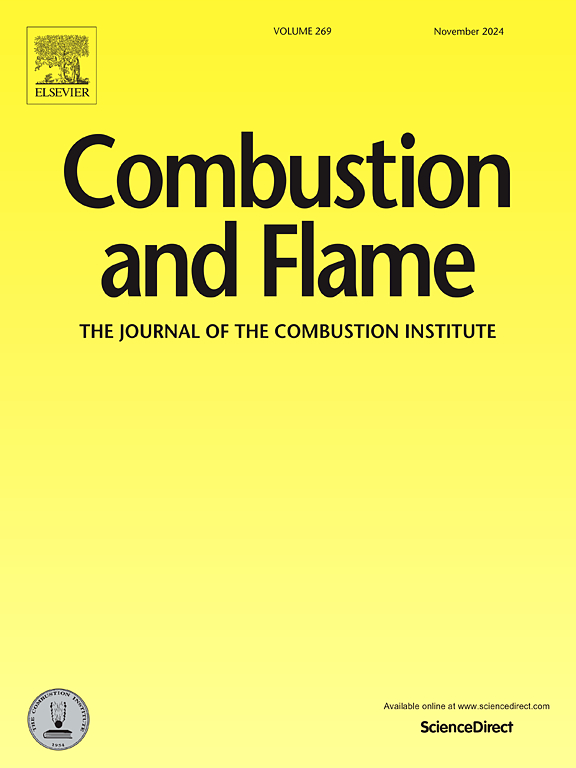An experimental and modeling study of the auto-ignition of NH3/syngas mixtures in a shock tube
IF 5.8
2区 工程技术
Q2 ENERGY & FUELS
引用次数: 0
Abstract
Ammonia (NH3) holds promise as an ideal zero-carbon fuel for modern energy systems. Co-combustion NH3 with syngas can enhance the reactivity and improve the combustion efficiency of NH3. In the current study, the auto-ignition and speciation experiments for NH3/syngas mixtures were conducted at pressures of 0.86 and 4.0 atm, within a temperature range of 1234–1620 K, and across three equivalence ratios of 0.5, 1.0, and 2.0, with syngas content of 20 %, 30 % and 50 %, respectively. To the best of our knowledge, the experimental study for NH3/syngas mixtures using shock tubes and laser absorption spectroscopy is the first in the literature. The experimental results show a similar reactivity under fuel-lean and stoichiometric conditions, which is slightly higher than the reactivity observed under fuel-rich conditions. The reactivity of the mixture is enhanced as the syngas content and pressure increase. The sensitivity analyses were conducted based on various kinetic models, and three key elementary reactions were identified that predominantly influence the oxidation of NH3/syngas mixtures under experimental conditions: R1 (N2H2+M<=>NNH+H+M), R2 (NH3+OH<=>NH2+H2O) and R3 (N2H2+H<=>NNH+H2). The rate constants of these three crucial reactions were updated based on literature data, and an updated detailed kinetic model (NH3-syngas model) was proposed based on our previous work (NH3-C2H4 model). Simulated results by the NH3-syngas model agree well with experimental data of the ignition delay times and time-histories of ammonia across different equivalence ratios, various syngas contents and pressures, as well as a series of literature data. Rate of production and sensitivity analyses were employed to elucidate the reaction pathways and crucial elementary reactions of NH3/syngas mixtures. This investigation may contribute to optimizing kinetic models between ammonia and higher carbon number fuels in the future.
求助全文
约1分钟内获得全文
求助全文
来源期刊

Combustion and Flame
工程技术-工程:化工
CiteScore
9.50
自引率
20.50%
发文量
631
审稿时长
3.8 months
期刊介绍:
The mission of the journal is to publish high quality work from experimental, theoretical, and computational investigations on the fundamentals of combustion phenomena and closely allied matters. While submissions in all pertinent areas are welcomed, past and recent focus of the journal has been on:
Development and validation of reaction kinetics, reduction of reaction mechanisms and modeling of combustion systems, including:
Conventional, alternative and surrogate fuels;
Pollutants;
Particulate and aerosol formation and abatement;
Heterogeneous processes.
Experimental, theoretical, and computational studies of laminar and turbulent combustion phenomena, including:
Premixed and non-premixed flames;
Ignition and extinction phenomena;
Flame propagation;
Flame structure;
Instabilities and swirl;
Flame spread;
Multi-phase reactants.
Advances in diagnostic and computational methods in combustion, including:
Measurement and simulation of scalar and vector properties;
Novel techniques;
State-of-the art applications.
Fundamental investigations of combustion technologies and systems, including:
Internal combustion engines;
Gas turbines;
Small- and large-scale stationary combustion and power generation;
Catalytic combustion;
Combustion synthesis;
Combustion under extreme conditions;
New concepts.
 求助内容:
求助内容: 应助结果提醒方式:
应助结果提醒方式:


